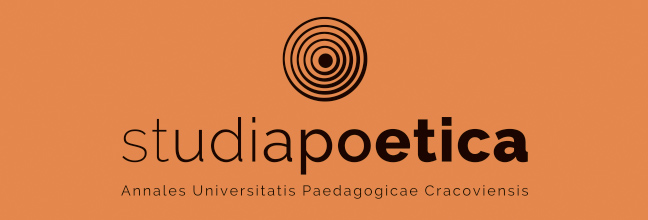Nulla res tam necessaria est omni generi hominum quam medicina. O medycynie, lekarzach i rzymskich szpitalach wojskowych w I–III w.
Main Article Content
Abstrakt
Tacitus’ claim that inter paganos miles corruptior (soldiers become corrupted among civilians) was to justify emperors’ decisions aimed to accommodate the legionaries away
from cities. Such location of legion camps was, according to Tacitus, supposed to protect the military men from extensive “softening” of their character. This statement should not, however, be taken literally. Despite their seclusion, legionaries gave up neither all contacts with civilians, nor luxuries. Although having military character, the camps were in fact a reflection
of the cities, with baths, canteens, and sometimes a theater and a lupanar built nearby. One of the most important buildings in a legionary camp was the hospital - valetudinarium.
This article aims not only at presenting the significance of hospitals and medical care, but also at showing the state of research on the subject. One of the problems discussed in
the article regards professional medical care. It is hard to establish when exactly qualified military doctors first appeared. Another problem is establishing the hierarchy of doctors
employed in valetudinarium. Scarcity of sources does not allow us to specify the method of hiring doctors, nor the value and kind of their remuneration. Still, owing to the archaeologists’
discoveries, we do know what the hospitals looked like. Although no two identical hospital buildings could be found, the principles of their construction and location were analogical in all camps. This fact enables identification of some of the hospital rooms, but, what is more important, the discovered medical instruments allow us to determine the range of medical help offered to the Roman legionaries of the 1st-3rd centuries.
from cities. Such location of legion camps was, according to Tacitus, supposed to protect the military men from extensive “softening” of their character. This statement should not, however, be taken literally. Despite their seclusion, legionaries gave up neither all contacts with civilians, nor luxuries. Although having military character, the camps were in fact a reflection
of the cities, with baths, canteens, and sometimes a theater and a lupanar built nearby. One of the most important buildings in a legionary camp was the hospital - valetudinarium.
This article aims not only at presenting the significance of hospitals and medical care, but also at showing the state of research on the subject. One of the problems discussed in
the article regards professional medical care. It is hard to establish when exactly qualified military doctors first appeared. Another problem is establishing the hierarchy of doctors
employed in valetudinarium. Scarcity of sources does not allow us to specify the method of hiring doctors, nor the value and kind of their remuneration. Still, owing to the archaeologists’
discoveries, we do know what the hospitals looked like. Although no two identical hospital buildings could be found, the principles of their construction and location were analogical in all camps. This fact enables identification of some of the hospital rooms, but, what is more important, the discovered medical instruments allow us to determine the range of medical help offered to the Roman legionaries of the 1st-3rd centuries.
Article Details
Jak cytować
Błyskal, O. (2015). Nulla res tam necessaria est omni generi hominum quam medicina. O medycynie, lekarzach i rzymskich szpitalach wojskowych w I–III w. Res Gestae. Czasopismo Historyczne, 8, 37–54. Pobrano z https://resgestae.uken.krakow.pl/article/view/1881
Numer
Dział
Artykuły
|
